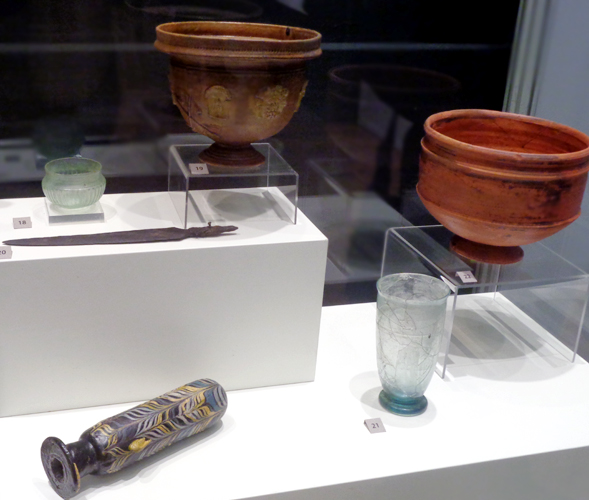Artifacts from the Apollonia Pontica antique necropolis in the Budjaka area of the Black Sea port town of Sozopol were among the most impressive findings at the 10th national exhibition named Bulgarian Archaeology. Dr. Margarita Popova from the National Museum of History and Dr. Teodora Bogdanova from the Archaeological Museum of Sozopol headed the excavations. An area of 1.2 ha was researched there over the past season. Dr. Bogdanova says that the most interesting artifact was a family tomb with impressive architecture, found on the territory of the huge site. It is the only one known so far from the antique Greek world, despite the intensive research of the Greek necropolises in Bulgaria and Romania. More from Dr. Teodora Bogdanova:
 “There were 7 burials inside, from two different periods. I.e., at first it was built up during the Hellenic epoch and was used as a family tomb. A total of 7 people were buried there, or the entire family. The elderly couple was in the central chamber, while three other graves obviously contained the remains of four children. The artifacts found inside are ceramic and glass vessels, terracotta figures and gold jewelry, the latter lying inside one of the children’s graves: a gold necklace and gold earrings of the ‘lion’s head’ type, popular over the Hellenic period. This whole facility was built up and used from the mid-3rd c. to the early 2nd c. BC. The central chamber was robbed at a later moment and the graves in the center were demolished. Obviously that was what the robbers could find. Then in the 1st c. AD the spot was again used for tombs – two of those have been found, dated to the Roman period. However, since they were not ruined, we decided that the ruining and burglary of the Hellenic tomb happened prior to the 1st c. AD – still in Antiquity. It looks like those people were pretty well off, as the objects which remained after the tomb’s offending show that the gifts were quite rich.”
“There were 7 burials inside, from two different periods. I.e., at first it was built up during the Hellenic epoch and was used as a family tomb. A total of 7 people were buried there, or the entire family. The elderly couple was in the central chamber, while three other graves obviously contained the remains of four children. The artifacts found inside are ceramic and glass vessels, terracotta figures and gold jewelry, the latter lying inside one of the children’s graves: a gold necklace and gold earrings of the ‘lion’s head’ type, popular over the Hellenic period. This whole facility was built up and used from the mid-3rd c. to the early 2nd c. BC. The central chamber was robbed at a later moment and the graves in the center were demolished. Obviously that was what the robbers could find. Then in the 1st c. AD the spot was again used for tombs – two of those have been found, dated to the Roman period. However, since they were not ruined, we decided that the ruining and burglary of the Hellenic tomb happened prior to the 1st c. AD – still in Antiquity. It looks like those people were pretty well off, as the objects which remained after the tomb’s offending show that the gifts were quite rich.”
Apparently someone knew that valuable objects were hidden inside and the tombs were attacked quite early in time. Fortunately the children’s grave was somehow at the periphery and remained untouched, to the delight of the archaeologists.

English version: Zhivko Stanchev
There is a map which helped usher in the birth of modern Bulgaria during the Russo-Turkish War of 1877-1878. The Austro-Hungarian researcher Felix Kanitz (1829 – 1904) was the first West European to have travelled to more than 3,200 towns and villages..
On 3 March, Bulgaria celebrates the 147th anniversary of its liberation f rom five centuries of Ottoman rule. The day was declared a national holiday in 1990 by a decision of the National Assembly. The Treaty of San Stefano, signed on 19 February..
Today is Cheesefare Sunday. According to Orthodox tradition, this day is observed on the eve of Great Lent, when Christians seek and give forgiveness to each other . It is also known as Sirni Zagovezni because it marks the last day before Lent, when..

+359 2 9336 661
